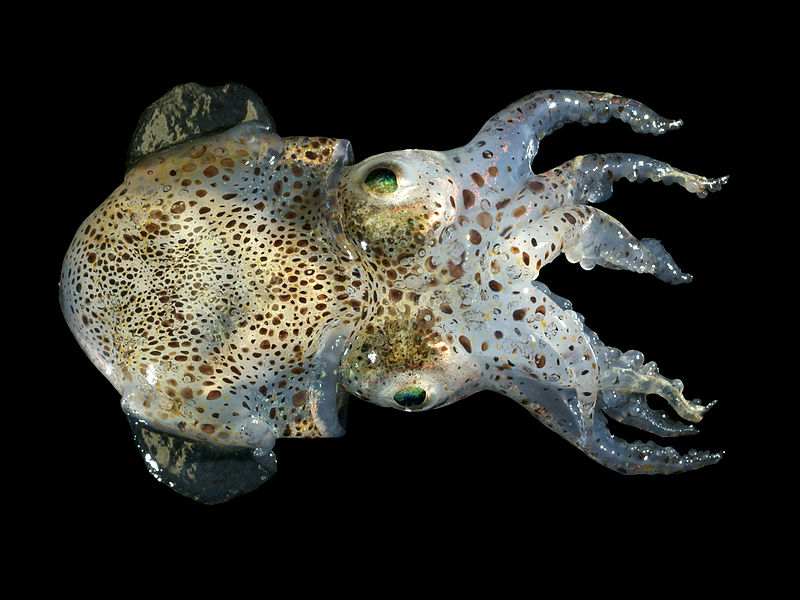Science News
Endeavour's Passengers

Space Shuttle Endeavour’s successful launch yesterday sent not only Gabrielle Gifford’s husband and his five fellow astronauts into space, but an assortment of creatures, too—baby bobtail squid, worms and a few microorganisms.
The squid are part of an experiment to see if, like some collegiate females on spring break, good bacteria “go wild” in the microgravity of space. Bobtail squid use bacteria called Vibrio fischeri to generate light. According to Discovery News:
That light helps the squid hunt for prey in dark waters. It also provides camouflage from any organisms trying to eat him, because the squid doesn't cast a telltale shadow on the ocean floor as a result of the moon's rays shining down into the water.
Previous shuttle experiments have shown what happens to harmful bacteria in space, but this will be the first experiment with beneficial bacteria. Scientists are hoping that these results with squid will translate to beneficial bacteria with humans.
The NASA press kit reports that worms are part of the mission:
One NASA experiment known as Biology (Bio) will use, among other items, C. elegans worms, that are descendants of worms that survived the STS-107 space shuttle Columbia accident.
Haven’t these worms been through enough?!
Wired UK has a breakdown of other microbes joining STS134:
The microbes on-board Endeavour include the tardigrades (nicknamed Water Bears) which are large extremophiles that can withstand temperatures as biting as absolute zero, and as hot as 150 degrees Celsius. They’re joined by the Deinococcus radiodurans (which NASA dubbed “Conan the Bacterium“) which can survive upward of 15,000 Gy of radiation — 10 Gy is more than enough to kill an average human.
Haloarcula marismortui (Old Salty) loves salt, and lives in levels of high salinity that would kill other organisms. Pyrococcus furiosus (Fire Eater) is all about heat, and thrives in temperatures over 100 degrees Celsius. Cupriavidus metallidurans (which doesn’t have a nickname, unfortunately) plays a vital role in the formation of gold nuggets, thanks to its love of gold tetrachloride: a compound that is toxic to most other microorganisms.
Finally there’s Bacillus subtilis (The Average Joe), which is a model organism used in hundreds of biological experiments. It’s been into space many times before, so it’ll be a good comparison point for other studies.
You know, Dorothy only had lions and tigers and bears to face in Oz…
Image by Hans Hillewaert/Wikimedia